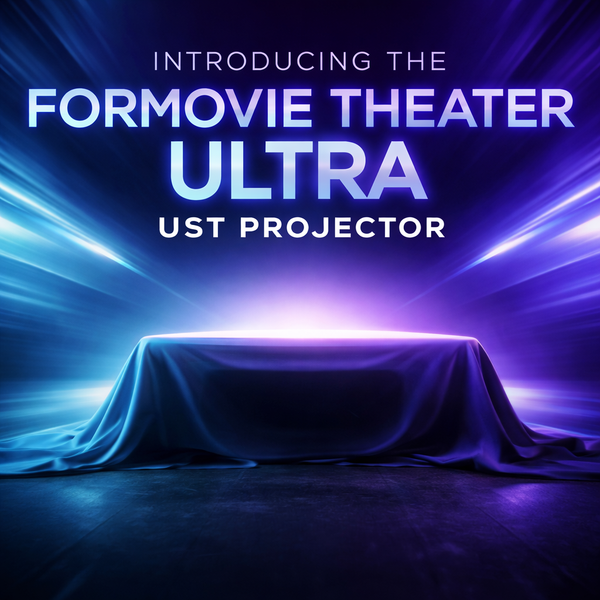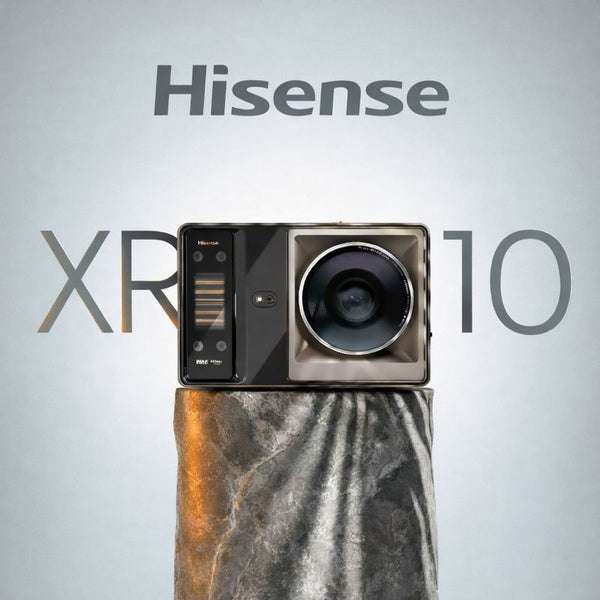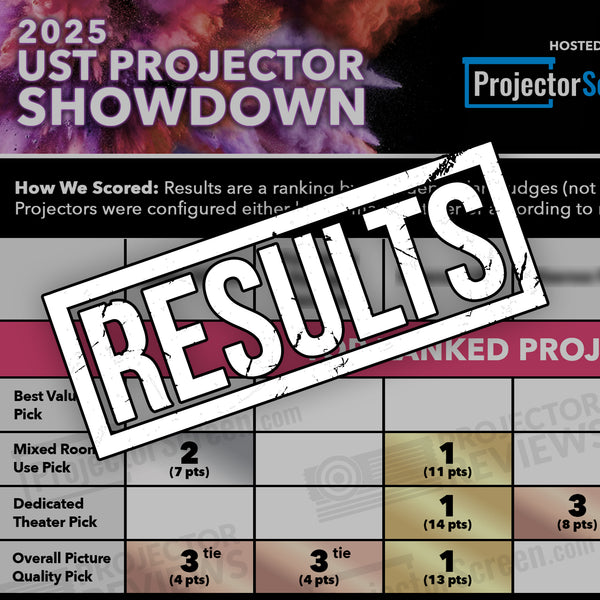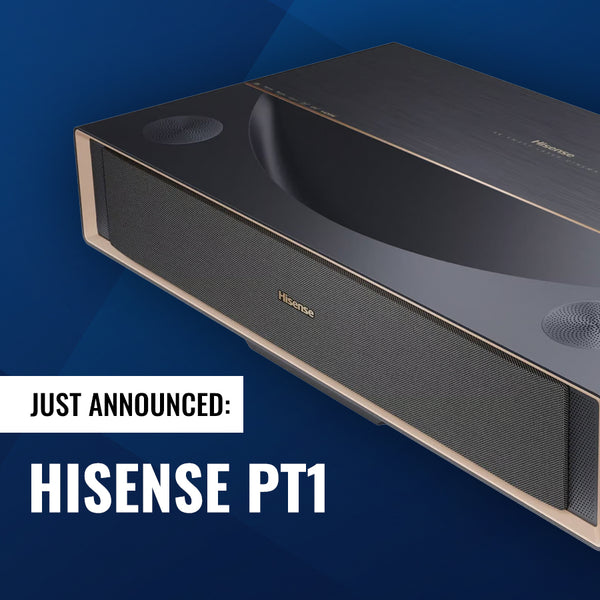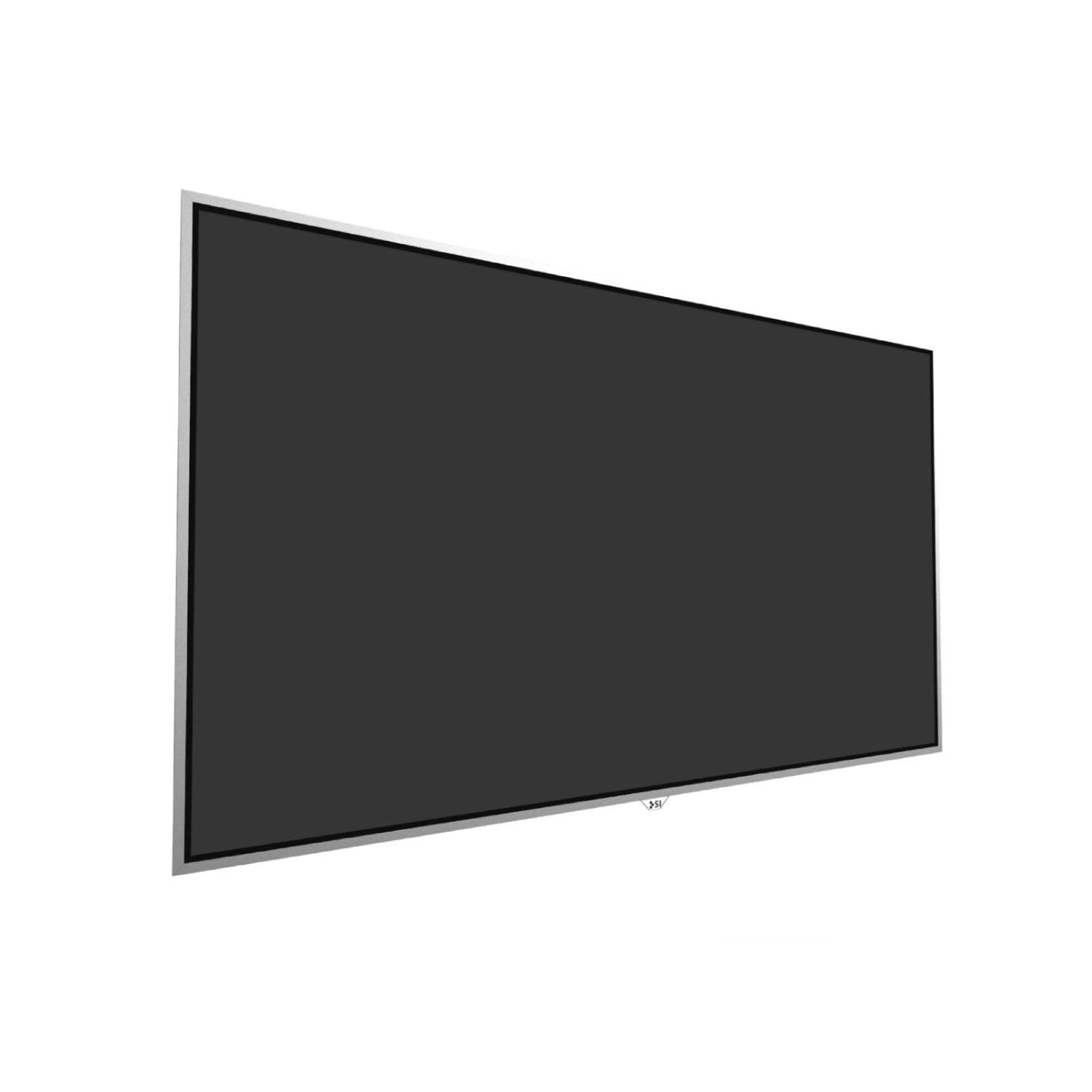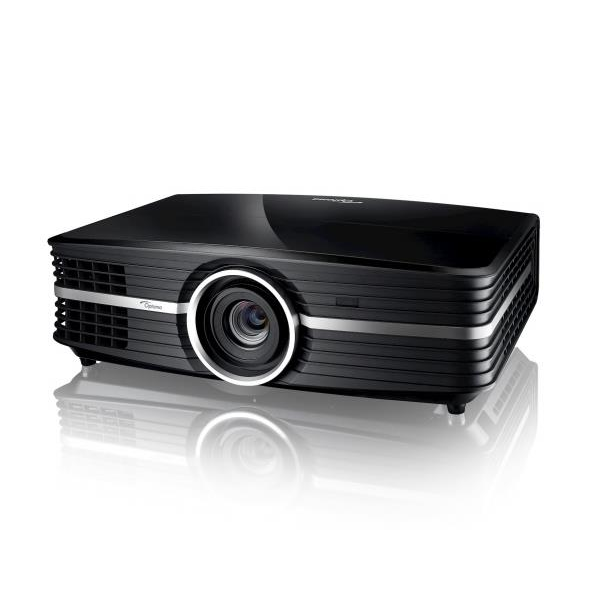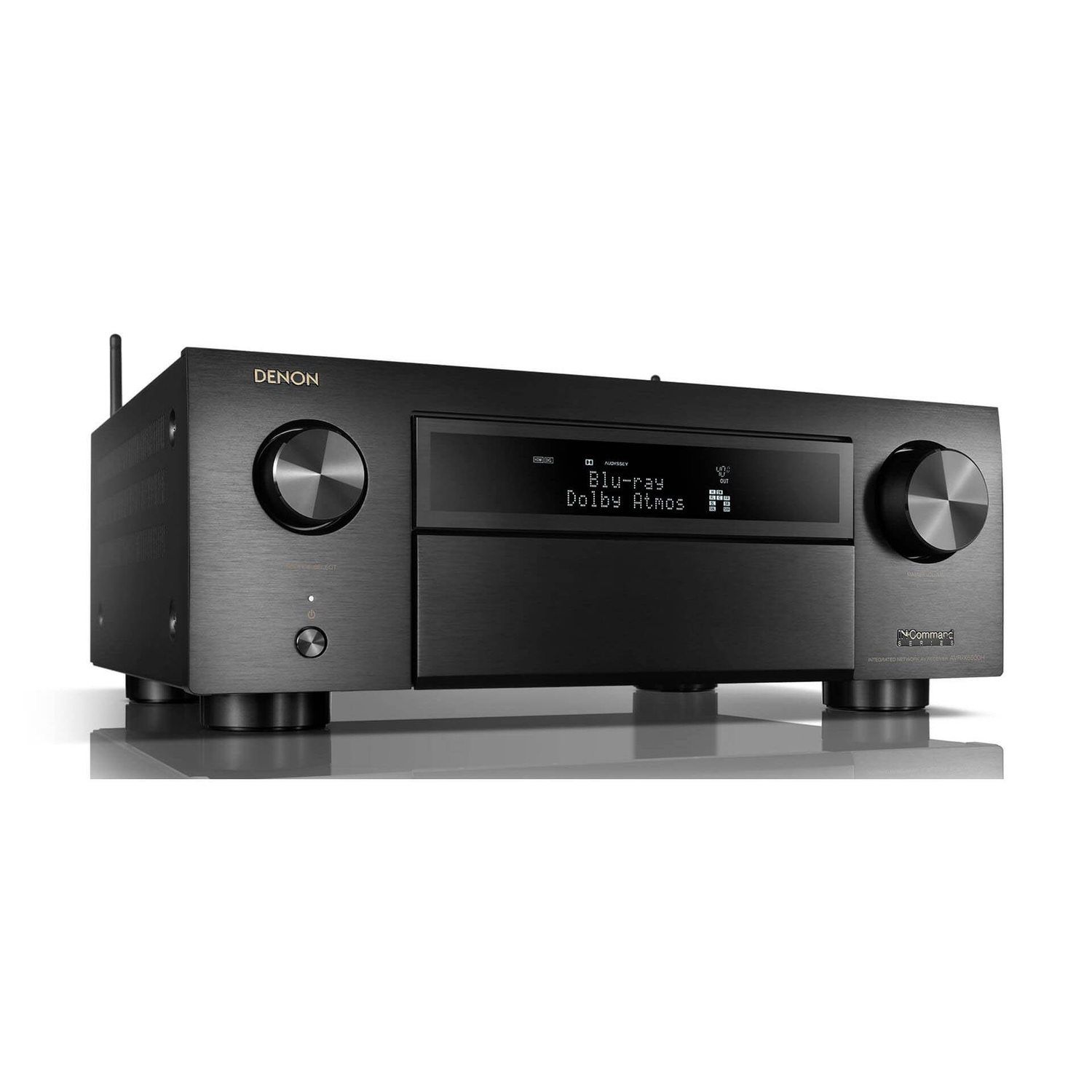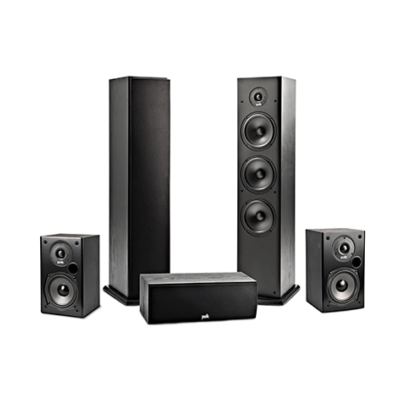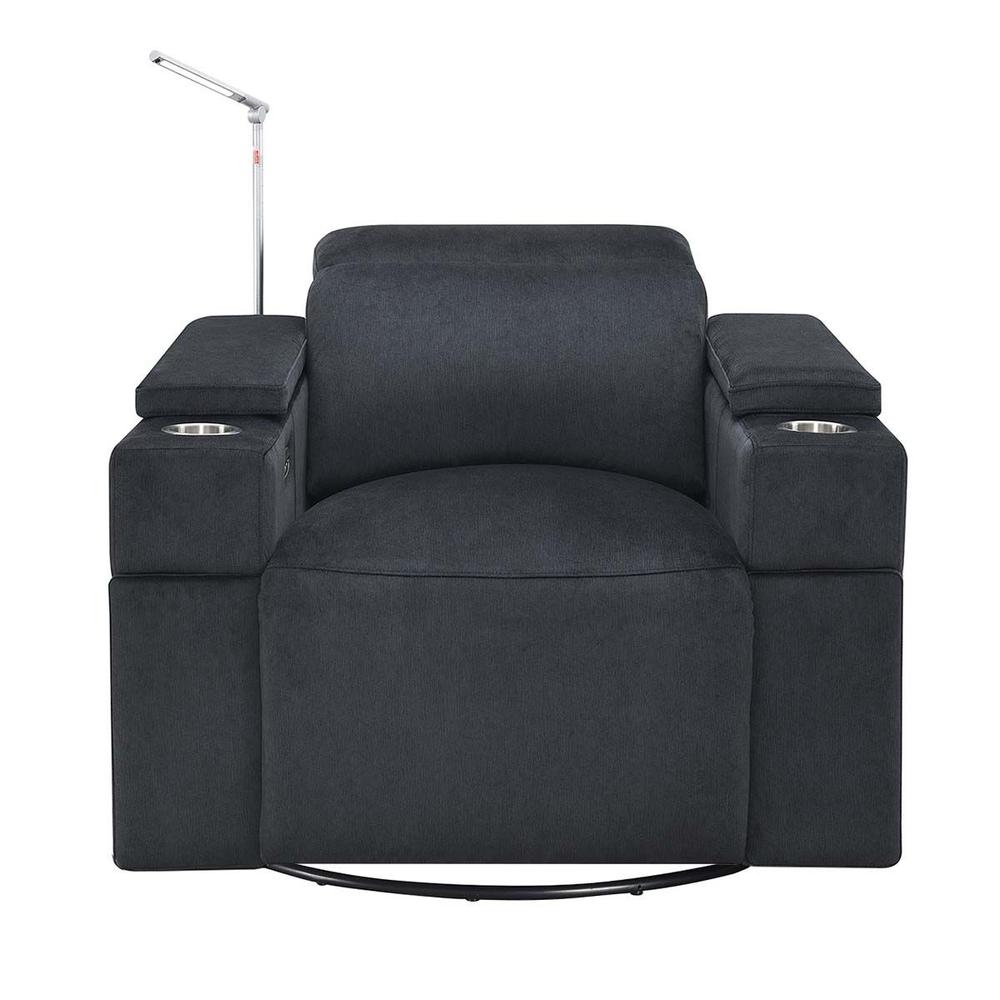Meet the Brand - Elite Screens
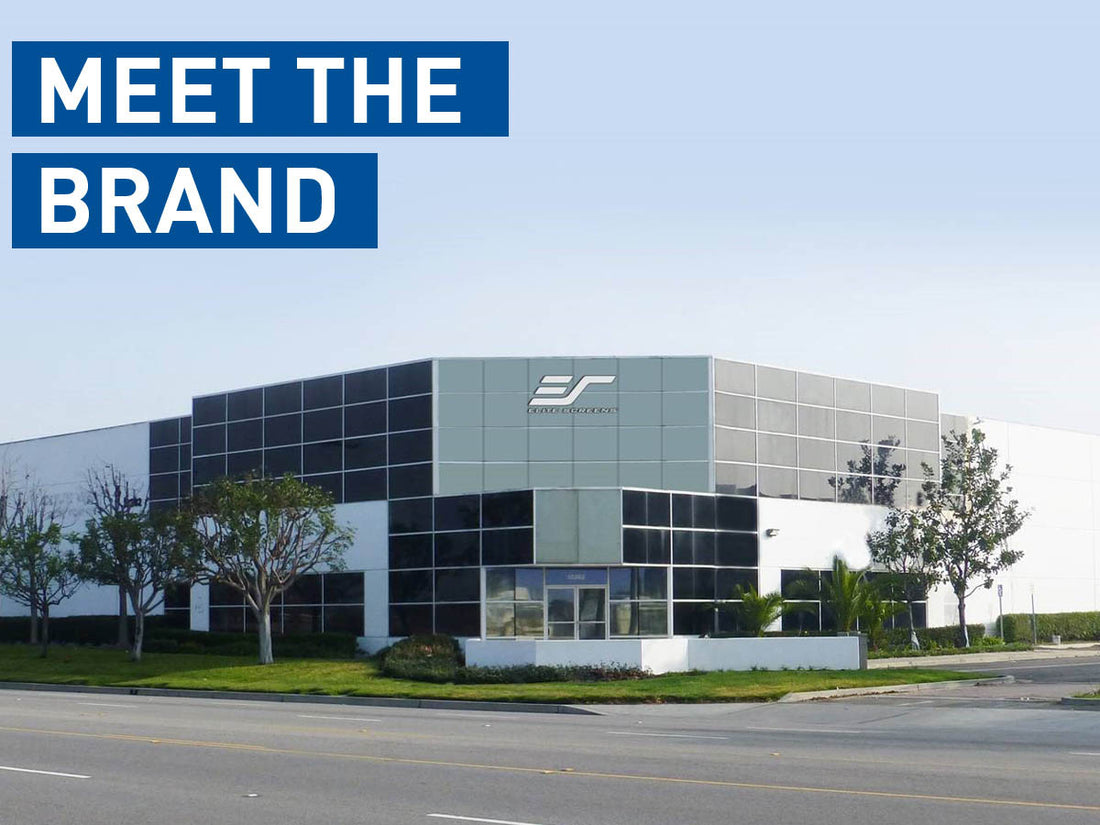
Elite Screens Your Projection Screen Company
We have been fortunate to have been working with Elite Screens as they progressed from a new brand in the USA to one of the most recognized consumer brands in the projector screen space over the past 10 years.
A California based company, Elite Screens offers some of the best valued products for your dollar available today. While their products are priced to be affordable they do not skimp on quality and produce some of the most popular models of screens on the market today.
It is our pleasure to introduce our good friends, Elite Screens in this "Meet the Brand" post.

Elite Screens: Elite Screens Inc. is a California-based projection screen manufacturer with satellite offices in the Eastern US, Europe, Asia and Australia to support its worldwide distribution network. Its ISO9000-2008 certified manufacturing facilities produce a wide array of projection screens for the commercial and residential audio-visual markets. Elite products are available through authorized distributors, resellers, retailers and system integrators worldwide.
Elite's mission is to provide the latest in quality projection screens quickly and conveniently for today's integrators, retailers and direct to customers at the best possible price without sacrificing professional-grade quality. Its award-winning product and devotion to brand excellence has made Elite Screens a leading manufacturer in the US market and a rising star in Asian and European projection screen sales.
ProjectorScreen.com: What separates Elite from your competitors? Why are you better?
Elite Screens: For ten years now, Elite Screens has led the charge to bring home the large projection screen experience at a price point that is compliant with even a modest spending budget. While other brands focused on deep pockets and the seemingly limitless supply of home equity credit, Elite focused on providing quality product lines at sensible prices that the typical consumer electronics buyer can afford.
With the crash of 2008 and the years thereafter, Elite enjoyed considerable growth promoting home theater as an affordable comfort for the everyday buyer as other brands struggled with moving high-cost goods with a vanishing loan-driven customer base. Elite now provides a broad array of high quality, electric, manual, fixed-frame and portable products suitable for virtually any type of audio-visual environment.
Elite Screens: Elite's lines of fixed-frame projection screens excel in quality while beating the competition in price. They are inexpensive to ship; easy to install; and last for years with minimal if any maintenance required. They have been a favorite for retail bundling and DIY to Integrator-grade home theaters alike.
Elite's various lines of manual projection screens provide the best alternative for either entry-level home theater or as a standard non-electric presentation accessory. They are highly reliable and easily attained due to product availability and price. Attention to consistent quality manufacturing and support has made this a favorite item with individual end users as well as large facilities and educational buyers.
Elite's various lines of electric projection screens offer a good-better-best solution by offering a selection of product lines with added accessories and features geared toward the buyer's personal needs. This eliminates the inconvenience of aftermarket accessorizing or spending more on a product that largely surpasses the end-user's needs. Each electric screen includes features and accessories normally sold separately and arrive fully assembled for plug-and-play operation.
Elite's portable projection screens are designed specifically to handle the rigors of travel in addition to providing a quick set-up/take-down design. They incorporate a combination of lightweight fabrics and supports to facilitate presentations ranging from indoor tabletop to large outdoor events.
ProjectorScreen.com: What is your longest selling, flagship product line? Please give us a little history and description.
Elite Screens: The VMAX2 projection screen is the flagship product of Elite's line of electric projection screens.
Its internal Radio Frequency and Infrared receivers streamline the VMAX2's appearance by eliminating the need for an external control source. An RJ45 Ethernet cable port gives you the option of attaching a 3-way wall box, extended IR receiver for recessed ceiling installations or a 12 volt trigger to synchronize the screens operation with the projector's power cycle. All of these features in addition to the IR & RF remotes come standard. The synchronized motor is power saving and quiet in its operation.
The VMAX2 comes in a wide variety of sizes from 84" to 235" with custom options up to 400". We also offer screen aspect ratios in 1:1 overhead projector, 4:3 & 16:10 commercial and 16:9 home theater formats. The projection surface is Elite's 1.1 gain MaxWhite multipurpose material, or MaxWhite FG (fiberglass-backed) for the larger models.
Both of which are GREENGUARD (UL 2818) certified for indoor emissions whereas the FG material carries an NFPA 701 flame retardant certification as well.
ProjectorScreen.com: Is there a particular product line that Elite is most proud of? If so, please tell us why.
Elite Screens: The VersaWhite series of whiteboard-projection screens distinguishes itself from other designs with its ability to combine the best of theater-grade screen performance with the practical applications of a dry-erase whiteboard. Elite produces different variations of this product ranging from the traditional free-standing or wall-mounted magnetic whiteboard format to pliable wall-coverings for a variety of surface textures.
The pliable models are either a thin film for smooth surfaces; foam-backed for brick or textured walls; or ferromagnetic for steel walls found , on standard whiteboards, in ocean vessels or various industrial complexes. These products convert entire walls into a cost effective combination of theater-grade projection screen and a dry-erase whiteboard.
The VersaWhite material's 1.1 gain matte white surface is coated with a durable optical nanotech resin. This is important because regular projection screens are incapable of being used as a writing surface while whiteboards fail to fulfill the role as a suitable projection screen. The most important concept behind the design however, is that this product is custom crafted specifically to meet educational specifications as a more appropriate replacement for interactive whiteboards. Teacher/trainer feedback emphasized how interactive whiteboards are too costly to be used by most facilities and schools in all of their classrooms.
They are also loaded with superfluous features few instructors have need for. The Insta-DE4x20HW addresses all these challenges with a resoundingly successful, yet simple solution. It works easily with short throw/interactive projectors as a cost effective, simpler and more user-friendly alternate to over complicated and prohibitively expensive interactive whiteboards. It is also (UL 2818) GREENGUARD certified for safe indoor air quality emissions.
ProjectorScreen.com: Which of your products is the most unique compared to what your competition is offering?
Elite Screens: The various whiteboard projection screens as featured in question #5 is again, the same answer here. The whiteboard was developed as a direct reply to educators in need of a more simplified and cost-effective alternate to the interactive whiteboards.
The traditional interactive whiteboards are over-complicated when compared to the basic needs for educators and they are by far, too expensive for any school district to equip every classroom with.
An Elite whiteboard-projection screen, coupled with an entry-level interactive projector more than fulfills its role at a fraction of an "interactive-WB Screen" over 95% of the time. Other screen manufacturers have attempted to replicate our brand but to date, they either come up short on the overall quality or on an enticing price point.
ProjectorScreen.com: Are there any new products/concepts that are in the works with Elite Screens that our readers will be interested in learning about?
Elite Screens: There is a new brand named the Starling series and it comes in either a tensioned or standard white screen material.
The
Starling Series features a stylish arcuate profile metal casing with choice of gloss white or black that will blend nicely with interior décor. It uses Elite's 1.1 gain Spectra White FG material
with a quiet and power saving synchronous motor. The Starling electric projection screen ships fully assembled with a complete set of Infrared and Radio Frequency Remotes along with an in-line UP/STOP/DOWN control box switch. Product is available in a range of sizes including 100", 120" and 135" in a 16:9 HDTV format" through the CE Retail channel.
The StarlingTension Series features an enhanced aluminum casing with floating installation brackets for added versatility in an installation. Its stylish arcuate profile readily enhances the flow of interior décor. It uses Elite's 1.1 gain Spectra White FG material with a quiet and power saving synchronous motor. The Starling Tension electric projection screen ships fully assembled with integrated control buttons on the endcap in additon to a complete set of Infrared and Radio Frequency Remotes, a 12-volt trigger and RS232 port. Product is available in a range of sizes including 100", 120", 135", and 150"in a 16:9 HDTV format" through the CE Retail channel.
ProjectorScreen.com: What do you see as being the "Next Big Thing" from Elite Screens?
Elite Screens: Ambient light is illumination from indoor/outdoor origins that may wash out your projected image. For sanctuaries especially, we have encountered many cases where adequate control levels of ambient light are not available. For this reason, we have developed a new ambient light-reflecting material at a price point that even small congregations can afford, the Cinegrey 5D. This material has a micro structure in its reflective layers that are incapable of adequately reflecting any light from any peripheral sources while reflecting images that are being projected directly on it with perfect clarity.
The Aeon Series is a fixed frame projection screen that uses Elite's EDGE FREE™ technology. EDGE FREE™ means that there is no external framework (edge) bordering the material as seen in traditional frame-screens. The design utilizes an internal frame with wrap-around material that resembles a giant size flat panel display. The Aeon includes anultra-thin 10 mm black trim edge strip as an option to further enhance the overall appearance.
ProjectorScreen.com: What are some of the biggest mistakes that consumers make when purchasing projector screens?
Elite Screens: The biggest mistakes consumers make typically involve the size of the screen, its placement and the material used. Consumers often get the idea into their heads that "bigger is better" only to realize that spent too much, to get more than they needed.
The end result is that they learn at their own expense why most people really hate sitting in the first 5 rows of a movie theater. Placement is also important. Make sure that it is perfectly level with your field of view so that you won't need to sit at an uncomfortable angle to see the image. Your back will thank you for this.
The best solution is to project your image on the wall; adjust it to the largest size that can be comfortably viewed in each particular environment and then go with that.
The other is to get a material that is appropriate to your environment.
Matte white screens are great when used with superb light control or a high-output projector.
However, sometimes specialty materials should be used such as environments with high levels of ambient light.
ProjectorScreen.com: What tips can your offer to consumers looking to purchase projector screens?
Elite Screens:

Let's get over the idea that a big projection screen installation is some kind of a P-daddy extra accessory for commercial facilities; it's a necessity now. Remember the good old days when a 150 lb. 32" CRT balanced on top of a 50 lb. rolling media cart pushed by a nerve-wracked student went teetering precariously from classroom to classroom at your high school? Well the days of those top-heavy rolling death-hammers are done. Here's the new solution.
Many business owners of the past have shunned this concept for reasons like the perceived extra cost and the lack of space. Both counts are wrong. In many cases, the costs of having a decent projector and screen have dropped into the same price range as that of a flat panel TV. The big differences however are that the flat panel TV's image is smaller and when it comes to the inevitable replacement, a projector's "light bulb" is a lot cheaper than buying a new display. So, what about space? Glad you asked.
In regards to space consciousnesses, every square foot of your property has its monthly cost that you are paying for. This isn't something to go OCD crazy over but it should be considered. That being said, a nice big visual image capable of reaching every set of eyes in the room is just as important. The trick is to get the big picture without dedicating too much space. To conserve space, think 2 things; throw distance and screen location.
Many standard projectors require a considerable amount of space or throw distance to create a relatively large projected image. Throw-distance is the measured space between the projector's lens and your projection screen surface. Hence, the longer the throw-distance, the larger the image will be. Google "projection screen calculator"; resources like this can help you establish the ideal throw distance for the projector you have.
For professional meeting rooms, resorts, and large halls, I recommend a ceiling mounted projector. This keeps the projector safely out of the way and your space open. For small "DIY" meeting rooms a "tabletop" projector is ideal. For the average-sized conference room, use a screen with an 84"-150" diagonal size range. For ballrooms and conference facilities, the size may equal that of a movie theater (200"- 600"). Large ball rooms should have a screen positioned so that it is easily visible to either a standing or seated audience. Meeting rooms should have the screen positioned in a way that the people sitting closer to the front of the room will not eclipse the image from those in the back.
It is best to use either a retractable "in-ceiling" projection screen or a flush-mounted "fixed" screen. I personally love in-ceiling projection screens and the wow-factor of a monstrous +150 inch dropping out of the ceiling into a conference room. When you don't need a screen, it hides in the ceiling leaving your wall open to be used in any way you need.
If you plan on having a designated presentation spot, then I recommend using two relatively new products, the ultra-short throw projector and the whiteboard-projection screen. Ultra short throw projectors will give you that big-screen punch from a distance of less than 2-feet. The presenter does not make a shadow on the screen. I like these better than standard projectors because I hate that uncomfortable blinding beam of light that makes any hapless individual walking in front of the screen feel like they just got caught trying to escape from Stalag 13.
The whiteboard projection screen is nothing short of awesome. It's a cinema grade projection surface that is coated with a scratch-resistant optical nanotech resin. This means that in addition to having a screen that is durable and easy to clean, it can also be used as a dry-erase teaching aid. They come in either hard-framed or as a pliable wall-covering format.
Here's one of the few times that super-sizing is good for you so look at your empty wall space; do as I would and ask yourself WWCND? (What Would Chuck Norris Do?) Then give yourself the knockout big screen image you need.

Selecting a projection screen for educational facilities is a specific process just like it would be for any other business application. However, there is no reason for it to be a overly complicated or expensive process. The four main criteria are Projector compatibility, image size, lighting and function. In previous conversations, I have often referred to the latter as "environment" for the benefit of simplification. However, I believe that "lighting & function" really covers the broad spectrum of where the screen will be mounted and how it will be used.
Projector Compatibility: First of all, projector images come in different shapes or aspect ratios. The aspect ratio is the correlating height to width units of measurement for an image footprint. For example, a 16:9 aspect ratio means that for every 16 units of measured width a screen has, there will be a correlating measurement of 9 identical units vertically. Here is the basic rundown on the most common aspect ratios in schools, churches and other training facilities today:
- The 1:1 or "squared" aspect ratio is just that, a square. It is most commonly used with overhead projectors and in celluloid slide shows. (Kinda' old-fashioned now…)
- The 4:3 (or NTSC) is the standard shape for "old-school" televisions and computer monitors. It is also the most common format for commercial applications and computerized slideshows.
- HDTV, the 16:9 ratio the standard television aspect ratio. It is the most commonly used format in home theater installations.
- The new 16:10 (or WXGA) aspect ratio accommodates the latest computer formats and is more compatible with standard HDTV (16:9). Because of its versatility, there is a growing demand for 16:9 and 16:10 aspect ratios it is growing in popularity with commercial applications.
In order to maximize the professionalism of your presentation, the image should be properly matted to the screen. For this reason the projector and screen should have a shared aspect ratio. Second, the material needs to match the projector's performance. Over 90% of the time, a matte-white material is appropriate. It has a wide viewing angle that accommodates the wide spectrum of viewing directions of individuals throughout the room. Most commercial projectors pack the punch to work with a matte white material. However, specialized "ambient light rejecting" and rear projection materials are sometimes necessary due to excessive ambient light issues. (We'll get to this in a moment.)
Image size: This is essential to providing the highest degree of image visibility without overpowering the viewers. Too small an image is unimpressive, too big and the viewers will either get a stiff neck or miss out on the peripheral view. This is the same reason why the very front row seats of a movie theater are always the last to fill. As a rule of thumb, get your projector first and then project it on the wall. Increase the size until it is large but not too big for everyone in the room. Check this from your various seating positions; take note of it; and select your screen size accordingly. It will generally be 84-120" (diag.) for most meeting or class rooms and 150" to 400" for large conference halls and sanctuaries.
Lighting: Ambient light comes from sources other than the projector and is notorious for washing out images leaving a dull, "milky" picture instead of a sharp image with clear colors and detailed contrast. Ambient light can be negated in three ways. Either by using window shades and lighting control keep it from washing out the projected image; getting a more powerful projector, or by increasing the brightness of the projected image with a specialized material. Since we are talking screens we'll focus on Ambient light-rejecting materials. They use a highly-reflective surface to concentrate the projected image back to the viewers in a more narrow "viewing cone" while its shaded contrast filter layers keep ambient light from washing out the picture. However, this material is more suitable for traditional sanctuary or theater seating since the image loses its brightness for viewers seated too far to the side.
Function: There are many environments and just as many screen designs to suit them. Here are a few.
- A fixed frame screen is desired because it is comparatively lightweight so that it is easily hung up and it requires very little maintenance. Fixed-frame screens have a very professional "home theater" appearance so they would not be my first choice for a school but there are exceptions.
- Roll-up projection screens are best for multi-purpose rooms and come in either manual or electric formats. The manual screens are an ideal low-cost solution for smaller congregations. If the screen is going to be mounted in a hard-to-reach location, it will be better to get an electric version that has both infrared (IR) and radio frequency (RF) control options.
- Free-standing projection screens are ideal for environments where the architecture makes floor, ceiling or even suspended installations impossible. These are available in either manual or electric configurations. They operate in the same manner as retractable "wall-ceiling" screens do but go from the ground up. They usually come in sizes up to 200" and require no costly installation while taking up little room when stored.
- (Okay, I saved the best for last) The whiteboard/projection screens are a relatively new concept but are essential for classrooms. Whiteboard-projection screens are professional-grade projection materials that have been specially treated to function as dry-erase "whiteboards". I cannot say enough about how absolutely great these products are in educational environments. They combine the whiteboard and projection screen into one item thus negating any possibility of a mechanical failure which might happen with "roll-up" screens. I am also a firm believer in simplicity. The less time you spend dealing with hardware, the more time you have to focus on the lesson. It is an excellent dual-role solution as well as an inexpensive alternate for costly smart-whiteboards that most districts cannot afford to buy in bulk.
With all the great deals out there, you don't have to break your budget for the right look. The solutions are vast and you'll be happy with the results.

Not enough can be said about the aesthetic qualities of a projection screen. Doubly so in houses of worship.
The interior of most churches is crafted to create a comfortable atmosphere conducive to personal reflection, recognizing moral conviction and communion with our creator. Poor picture quality can detract from the visual experience that it really should be. However, there is no excuse for a church to go way beyond its budget to acquire "top tier" AV gear when simpler and more cost-effective solutions are at hand.
Find a good integrator that specializes in church installations. Neighboring congregations usually have great references. This really is a "word-of-mouth" industry.
The focus should be on environment (which screen will be the best match for your architecture). The layout of your room will determine if you should use a fixed-screen, a disappearing "roll-up" screen, suspended panels for high ceilings or a free-standing, mobile solution when wall/ceiling applications are not practical.
Next is lighting. Make sure you have adequate control over ambient light. If not, there are many new ambient light-rejecting screens entering the market at really affordable price points. Lastly, this seems really basic but I've seen the mistake made enough to make sure that the projector and screen have the same aspect ratio ("rectangular" shape of the projected image).
When you have an old NTSC (4:3) format image on an HDTV (16:9) screen, it just looks silly. Closely related to this is projector screen size. It needs to be big enough to be seen but not overpower the service. Congregations want fellowship, not an IMAX experience on the praise & worship lyrics and videos. (Despite how much your AV guy would love that.)

Across the board, most screen manufacturers sell more matte white materials than anything else. The reason for this is because most high-end to entry-level projectors today are delivering adequate levels of clarity, brightness and contrast. All they need is a pure white surface with good color temperature (neutrality) that keeps the picture from shifting to a more red, green, blue, etc. color tone. That being said, there has been an increased interest from customers in producing screens that can work with the latest high resolution projectors (aka 4K) in both standard and acoustically transparent (AT) materials.
Also, home theater is rapidly evolving from a "dark room devoted to the screen" to a dynamic room that allows multiple activities at once. This means that the need for a material that can counter the washout effects of ambient light have an increasing demand. Therein lies the opportunity for CE retail buyers to obtain a screen with enhanced performance features that were previously priced far beyond the sanity of your average consumer. Elite's answer to the CE Retail channel has been the CineGrey 5D.
Elite's CineGray 5D projection screen provides contrast with superior brightness levels even in the presence of ambient light. The 1.5 gain angular-reflective screen material uses a Silver-White reflective surface compound that is textured to ensure the depth of use in 3D presentations while maintaining an 88% polarization level. It is designed to enhance a higher contrast ratio while playing in high definition video modes such as 4K, 1080P, 720P, WXGA and XGA formats. The CineGray 5D's combination of superior brightness, contrast and 3D capabilities make it ideal for DIY residential applications.
Elite Screens: Bars & Restaurants - The same advice for Educational Facilities applies to Bars & Restaurants.
ProjectorScreen.com: Thank you for taking the time to help us introduce Elite Screens to our visitors. Are there any final thoughts you would like to end off on?
Elite Screens: Elite Screens is very proud to have our products featured and promoted with ProjectorScreen.com. Their management team have been valued partners of ours for many years and we rely on their expertise in the channel and products to support our mutual customers. - Barry Coles, Vice President, Elite Screens Inc.
ProjectorScreen.com: Thank's alot for sharing all of that great info with us Barry. We look forward to seeing what Elite has in store in 2015 and beyond!







